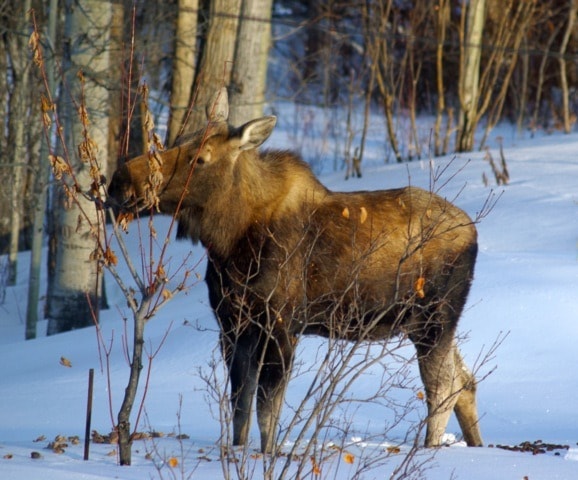The general open season for moose in the Burns Lake area starts tomorrow, from Oct. 20-26, and some chiefs on the Southside are unhappy with non-resident moose hunt near their territory.
Nee Tahi Buhn Chief Raymond Morris said non-resident hunters should not be allowed on the Southside.
"I'd block the non-resident hunters out," he said. "For a few years, maybe 50 years, to give time for plantations to grow more forest and habitat for moose… give the moose time to replenish."
Chief Morris said the last few years have been "dismal" for Nee Tahi Buhn hunters, who depend on moose for sustenance.
Cheslatta Carrier Nation Chief Corrina Leween said she also has a problem with non-resident hunters on the Southside.
"I do have a problem with the moose that are allowed to be taken off the Southside, so do many other people and non-native residents," she said.
The current split for hunters on the Southside is 75 per cent for residents and 25 per cent for non-residents.
The most recent data for moose harvested in the Southside region is from 2014, when 173 moose were harvested – 144 resident and 29 non-resident kills. In 2014, there were 56 non-resident hunters on the Southside and 890 resident hunters.
In 2015, many hunters in the Burns Lake area were left disappointed after a weak moose hunting season.
“Several hunters I encountered mentioned this was the slowest year they’ve seen,” said conservation officer Robert (Ron) Leblanc.
The moose population declined by 20 per cent from 2004 to 2011 in the Lakes District.
According to Denys Bell, member of the Tweedsmuir Park Rod and Gun Club and chairman for the Skeena Hunter Advisory Committee, hunting has not been a defining factor in the moose population decline in the southern Skeena region.
"We've actually harvested less than what we were allowed," said Bell.
Last week, the provincial government announced $195,000 in funding to expand a moose research project in the Skeena region.
According to Greig Bethel, a spokesperson for the B.C. Ministry of Forests, the project involves outreach and collaboration to First Nations and planning that will help determine next steps on activities such as habitat enhancement work.
Bethel said the province is also planning a survey to update its population estimate for moose in the Bulkley Valley/Lakes District this winter which will help inform ongoing management.
Lakes District News also attempted to contact Skin Tyee Nation Chief Rene Skin, but he did not respond by press time.
